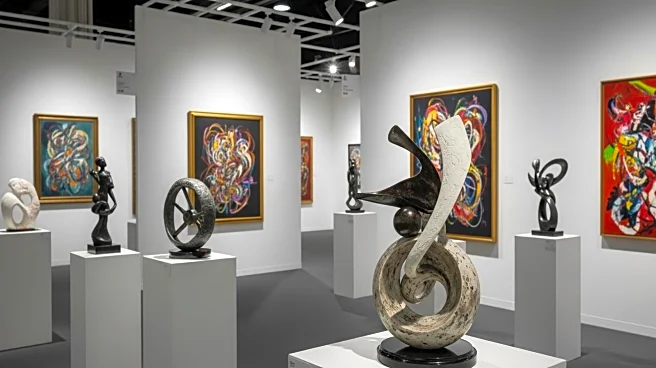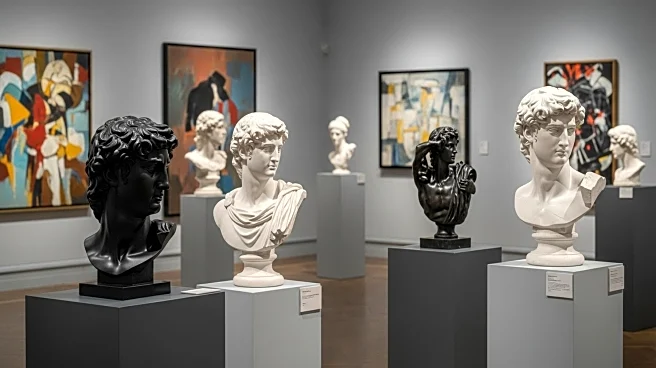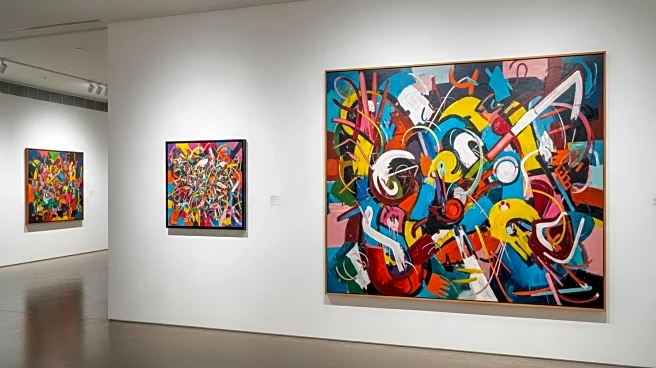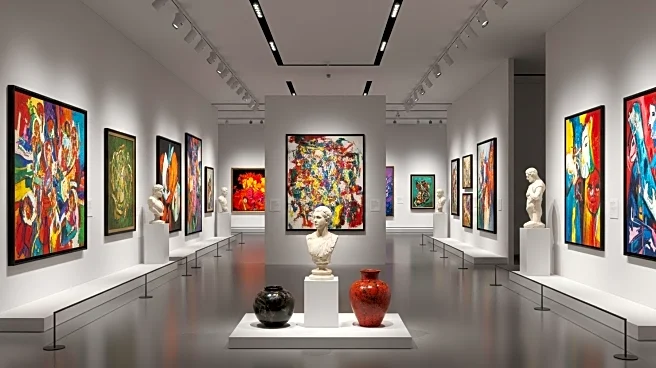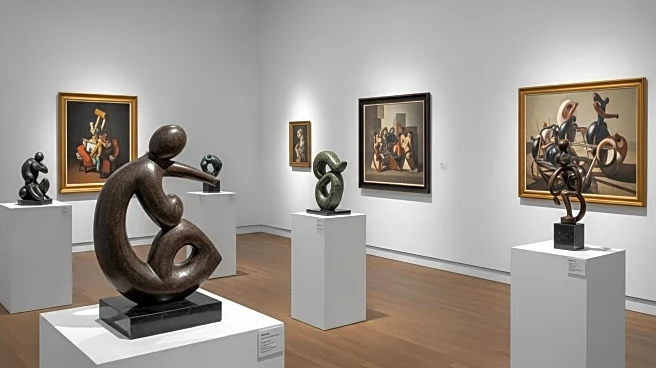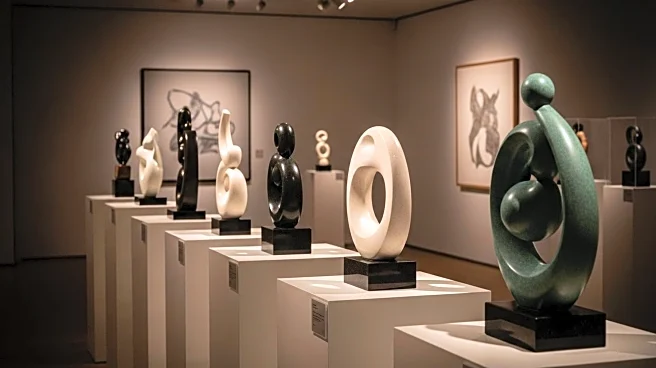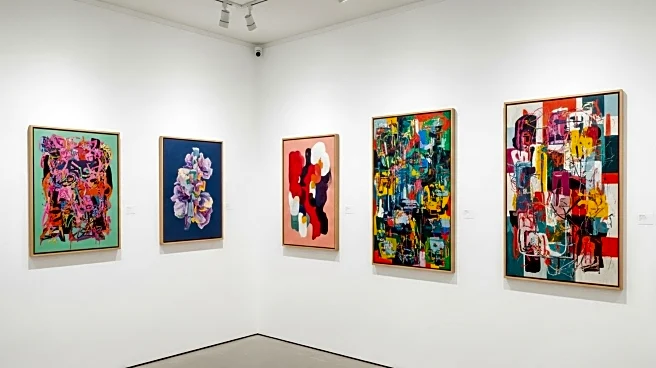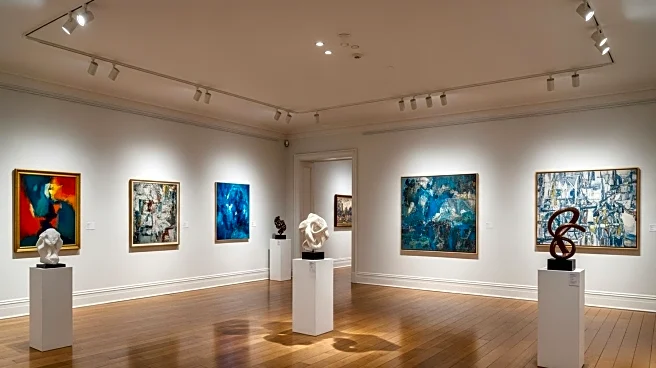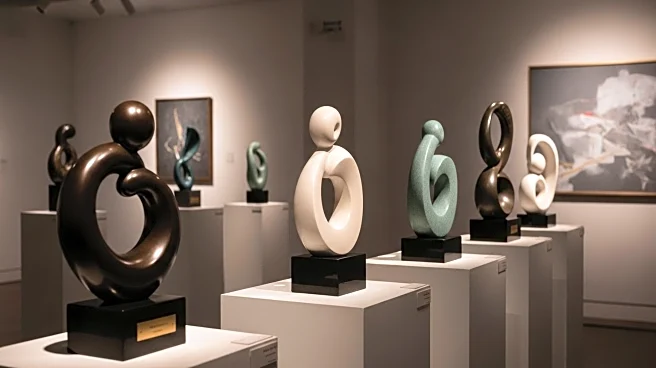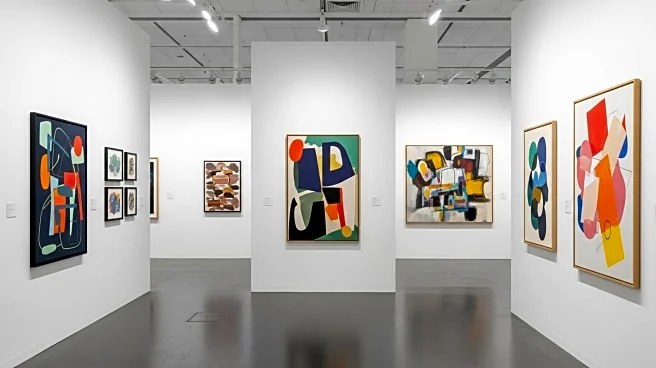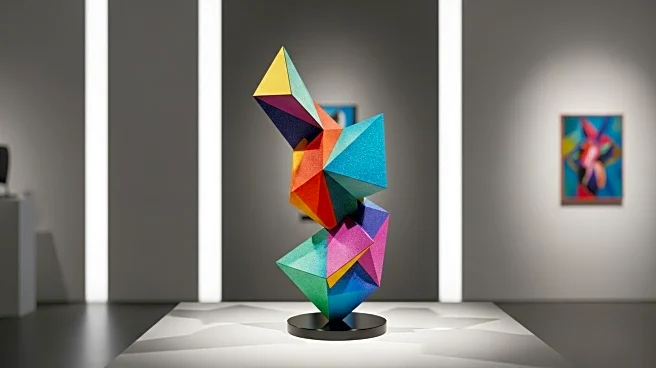What's Happening?
Tony Shafrazi, a prominent figure in the New York art scene, has made a notable return to the art fair circuit after more than a decade away. Shafrazi, known for his controversial act of spray-painting Picasso's Guernica in 1974, is showcasing works at the Independent 20th Century fair in New York. His booth features a column of gilded plaster bricks by Zadik Zadikian, echoing Brancusi’s Infinite Column, and a multi-panel set of canvases by Brandon Deener, painted to resemble Jiffy baking-mix boxes. Shafrazi's return is marked by his intense involvement in the presentation, treating it with the care and detail akin to an artist or producer. Elizabeth Dee, the fair's founder, noted Shafrazi's unique approach, emphasizing that his dedication to art and audience is what drives market interest.
Why It's Important?
Shafrazi's return to the art fair scene is significant as it highlights the enduring influence of historical figures in contemporary art markets. His presence underscores the idea that risk and genuine care for art can still drive market dynamics, challenging the current trend of strategic branding. This event may inspire other dealers to prioritize artistic integrity over commercial strategies, potentially reshaping the art market landscape. Shafrazi's involvement also brings attention to the works of artists like Zadikian and Deener, offering them a platform to reach broader audiences and gain recognition.
What's Next?
Shafrazi's re-entry into the art fair circuit could lead to renewed interest in his Gallery Without Walls concept, potentially influencing other dealers to adopt similar approaches. The art community may see increased collaboration between established figures and emerging artists, fostering innovation and diversity in exhibitions. As Shafrazi continues to engage with the art world, his actions may prompt discussions on the balance between commercial success and artistic expression, influencing future art market trends.
Beyond the Headlines
Shafrazi's return also raises questions about the role of historical narratives in shaping contemporary art practices. His past actions, such as the Guernica incident, continue to influence perceptions of his work and approach. This event may spark debates on the ethical implications of art interventions and the responsibilities of dealers in preserving and promoting cultural heritage.
